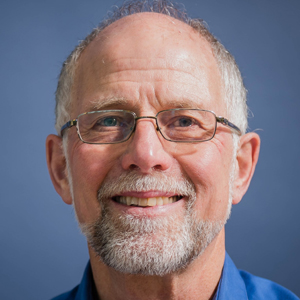Sugar coating is, in fact, important
Like people, whether they want to or not, cells need to interact with others around them. One way people interact is through the way they dress. Indeed, we often are judged by the clothes we wear. Cells are "clothed" in a specialised sugar layer known as the glycocalyx in which specific sugar structures are displayed on proteins and lipids. Based on this outer clothing layer, the cell is recognised by both friend and foe.
In this symposium, we will learn about new ways to identify, locate and quantitate the glycans present on different cells under specific conditions. We also will hear how we can dress cells for success through modification of their surface structures. In another section, we will learn how pathogens can recognize and invade cells through specific glycocalyx structures.
We also will hear several accounts of how cancer progression can be mediated through overexpression of glycans such as sialic acid and heparan. Apparently, as with people, inhibitions can be dampened by exuberance in cellular dressing. Learn about this and more at our symposium.
Keywords: glycosylation, glycocalyx, cellular interfaces, cancer, immunity, infection
Who should attend: anyone who is interested in understanding how cells function and interact with their environment through their surface glycan coat and anyone interested in cool new ways to modulate those interactions through carbohydrate chemistry and enzymology
Theme song (at least for the mucinophiles): "Born to Run" by Bruce Springsteen
This session is powered by interdisciplinary science with a sweet touch.
Talks
- Nanoscale physical biology of the cellular glycocalyx — Matthew J. Paszek, Cornell University
- MALDI imaging mass spectrometry mapping of the glycocalyx — Richard R. Drake, Medical University of South Carolina
- Genetic and small molecule strategies to edit the glycocalyx — Sriram Neelamegham, State University of New York at Buffalo
- Enzymatic removal of cell surface antigens as a route towards universal O type blood and organs — Stephen Withers, University of British Columbia
- Hypersialylation of tumor cells promotes pancreatic cancer progression — Susan Bellis, University of Alabama at Birmingham
- Receptor N-glycosylation links metabolism with signaling — James Dennis, Lunenfeld Tanenbaum Research Institute
- Modeling the mucinous glycocalyx to unravel receptor pattern recognition by influenza A viruses — Kamil Godula, University of California, San Diego
- Cell surface glycan engineering reveals that matriglycan alone can recapitulate dystroglycan binding and function — Geert-Jan Boons, University of Georgia
- The glycocalyx in tumor progression and metastasis — Valerie Weaver, University of California, San Francisco
- The heparanase/syndecan-1 axis in cancer progression — Ralph D. Sanderson, University of Alabama at Birmingham
- Reprogramming T cells to target glycans and overcome glycan-mediated immunosuppression for cancer therapy — Avery Posey, University of Pennsylvania
- Orchestrated intragranular restructuring of mucins during secretory granule maturation — Kelly Ten Hagen, National Institute of Dental and Craniofacial Research
Learn more
Check out all ten thematic symposia planned for the 2022 ASBMB annual meeting:
Enjoy reading ASBMB Today?
Become a member to receive the print edition four times a year and the digital edition monthly.
Learn moreFeatured jobs
from the ASBMB career center
Get the latest from ASBMB Today
Enter your email address, and we’ll send you a weekly email with recent articles, interviews and more.
Latest in Science
Science highlights or most popular articles

Mining microbes for rare earth solutions
Joseph Cotruvo, Jr., will receive the ASBMB Mildred Cohn Young Investigator Award at the ASBMB Annual Meeting, March 7–10, just outside of Washington, D.C.

Fueling healthier aging, connecting metabolism stress and time
Biochemist Melanie McReynolds investigates how metabolism and stress shape the aging process. Her research on NAD+, a molecule central to cellular energy, reveals how maintaining its balance could promote healthier, longer lives.

Mapping proteins, one side chain at a time
Roland Dunbrack Jr. will receive the ASBMB DeLano Award for Computational Biosciences at the ASBMB Annual Meeting, March 7–10, just outside of Washington, D.C.

Exploring the link between lipids and longevity
Meng Wang will present her work on metabolism and aging at the ASBMB Annual Meeting, March 7-10, just outside of Washington, D.C.

Defining a ‘crucial gatekeeper’ of lipid metabolism
George Carman receives the Herbert Tabor Research Award at the ASBMB Annual Meeting, March 7–10, just outside of Washington, D.C.

The science of staying strong
Muscles power every movement, but they also tell the story of aging itself. Scientists are uncovering how strength fades, why some species resist it and what lifestyle and molecular clues could help preserve muscle health for life.


